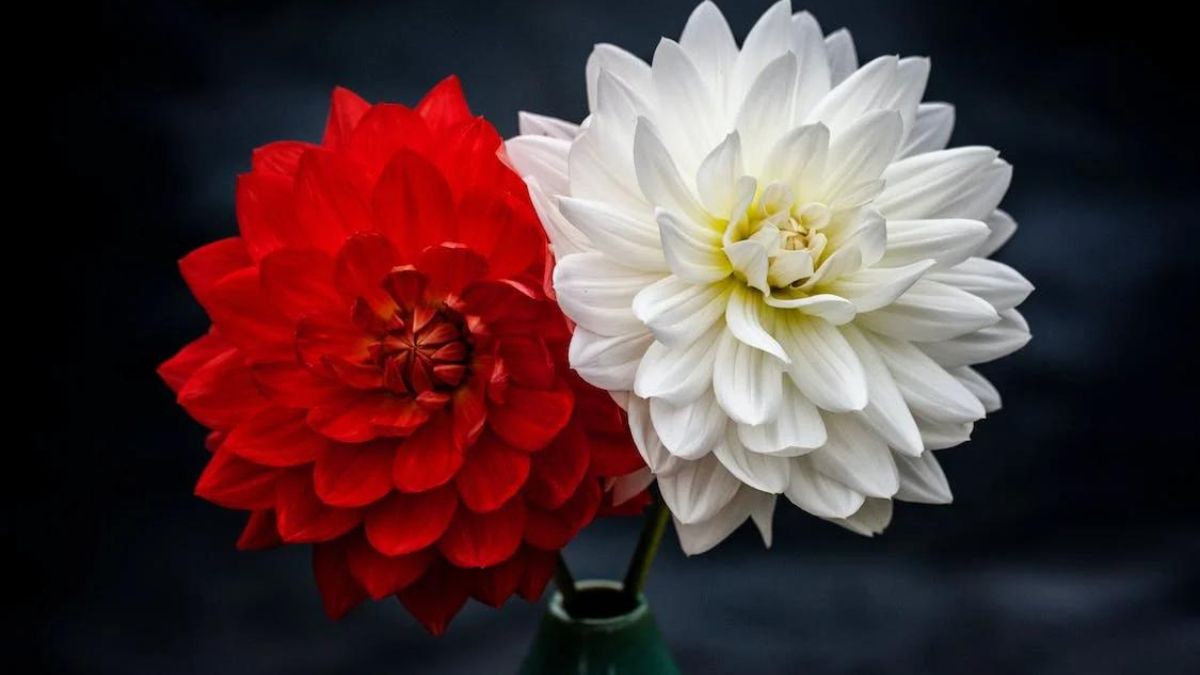Dahlia are a beautiful and versatile flower that can add color and texture to any garden. With their wide range of colors, shapes, and sizes, dahlias are a favorite of gardeners and flower enthusiasts around the world. In this article, we will discuss the various aspects of growing and enjoying dahlias, including their history, types, cultivation, and care.
History of Dahlias
Dahlias originated in Mexico and were first discovered by Spanish explorers in the late 18th century. They were named after the Swedish botanist Anders Dahl and were first introduced to Europe in the early 19th century. Since then, dahlias have become one of the most popular garden flowers in the world.
Types of Dahlias
Dahlias come in a wide range of types, including decorative, cactus, waterlily, ball, pompon, and collarette. Decorative dahlias are the most common and have large, showy flowers with multiple petals. Cactus dahlias have narrow, pointed petals that curve towards the center of the flower. Waterlily dahlias have a softer, more open petal arrangement that resembles a waterlily. Ball dahlias have a round, ball-like shape and are usually smaller in size. Pompon dahlias have small, compact flowers with tightly packed petals. Collarette dahlias have a central disc surrounded by a collar of smaller petals.
Cultivation of Dahlias
Dahlias are easy to grow and can thrive in a variety of conditions. They prefer full sun and well-draining soil. Dahlias should be planted in the spring after the last frost and should be spaced 1-2 feet apart. They should be watered regularly and fertilized every 4-6 weeks during the growing season. Deadheading spent flowers can promote the growth of new flowers.
Care of Dahlias
Dahlias require minimal care, but there are a few things to keep in mind. They should be staked or supported to prevent the flowers from drooping. Dahlias are also susceptible to pests such as slugs, snails, and aphids, so it’s important to keep an eye out for any signs of damage. If necessary, insecticides or other pest control methods can be used.
Enjoying Dahlias
Dahlias can be enjoyed in a variety of ways, from cut flowers to garden displays. Cut dahlias can last up to a week in a vase, making them a popular choice for floral arrangements. In the garden, dahlias can be planted in beds or borders and can be combined with other flowers to create a stunning display. Dahlias also make great container plants and can be grown in pots on patios or balconies.
When choosing dahlias, consider the size and color of the flowers, as well as the type of dahlia. It’s also important to choose dahlias that are appropriate for your climate and growing conditions. When planting dahlias, make sure to choose a location with full sun and well-draining soil. Dahlias should be planted at a depth of 6-8 inches and should be spaced 1-2 feet apart.
Propagating Dahlias
Dahlias can be propagated by dividing the tubers in the fall after the first frost or in the spring before planting. To divide the tubers, carefully dig up the dahlia plant and separate the tubers with a sharp knife. Each tuber should have at least one eye or bud. The tubers can then be replanted in the spring.
Overwintering Dahlias
In colder climates, dahlias need to be dug up and stored for the winter. To overwinter dahlias, wait until after the first frost to dig up the plants. Cut back the foliage to a few inches and carefully dig up the tubers. Allow the tubers to dry in a cool, dry place for a few days before storing them in a container filled with sawdust or vermiculite. Store the container in a cool, dry place until the spring.
Dahlias in Floral Arrangements
Dahlias are a popular choice for floral arrangements due to their vibrant colors and long vase life. To create a beautiful arrangement with dahlias, start with a clean vase filled with fresh water. Cut the stems of the dahlias at an angle and remove any foliage that will be below the water line. Arrange the dahlias in the vase, taking care not to overcrowd the flowers.
Dahlias in Cooking
Dahlias are not only beautiful, but they can also be used in cooking. The petals of dahlias are edible and can be added to salads, soups, and other dishes for a pop of color and flavor. It’s important to only use dahlias that have not been treated with pesticides or other chemicals.
Conclusion
Dahlia are a stunning and versatile flower that can be enjoyed in a variety of ways. By choosing the right type of dahlia, planting and caring for them properly, and using them in floral arrangements or cooking, anyone can appreciate the beauty and versatility of these amazing flowers. Whether in a garden, on a table, or on a plate, dahlias are sure to impress and delight.











